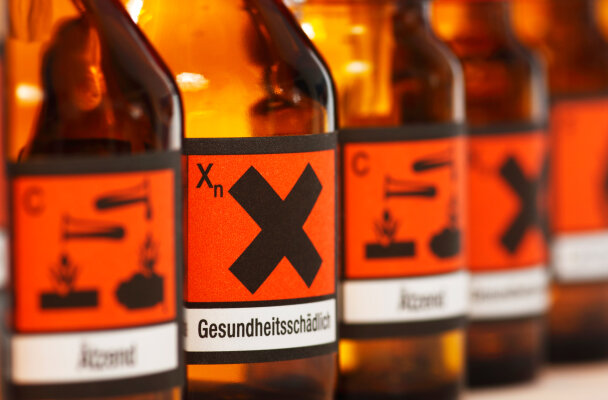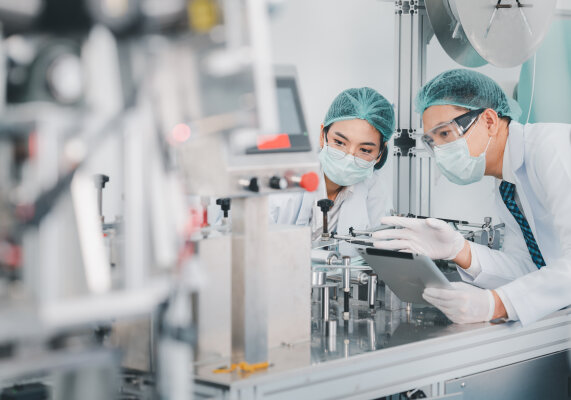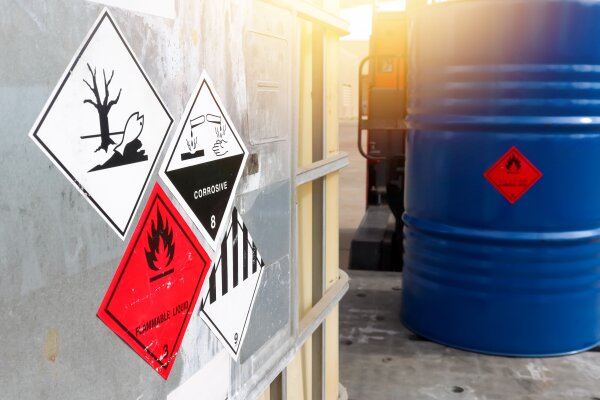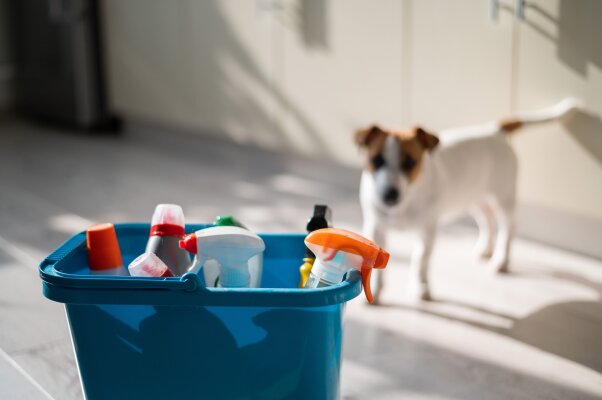Surface, wipe or scrub disinfection: Definition
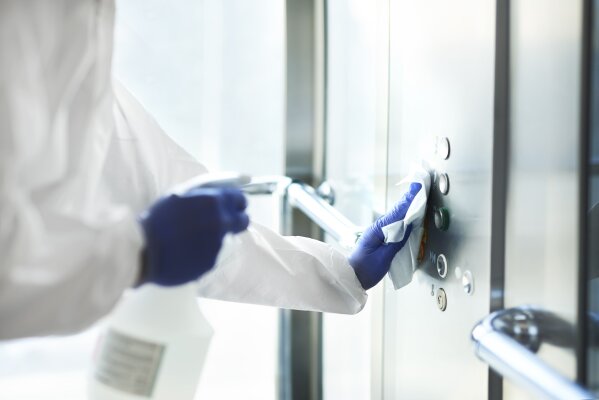
Disinfection is not just disinfection - different types and procedures can be distinguished that are related to the killing and inactivation of pathogens. How the definition of "disinfection" can be distinguished from that of cleaning and sterilization, which techniques are differentiated and what you should pay attention to when disinfecting, we have summarized compactly for you in this blog post.
What does disinfection mean? General definition
When we talk about disinfection, we are talking about a measure to inactivate and kill pathogens, germs and bacteria. Their number is reduced on a surface to such an extent that they no longer pose a risk of infection - which is why we can only speak of disinfection when the inactivation rate is between 84 and 99.9%.
However, the question "What is disinfection?" can also be answered in terms of procedure and methodology. According to the Robert Koch Institute (RKI), there is a list of tested disinfection procedures and agents that fall under this definition. This includes, for example, various disinfection objects (such as skin or surface disinfection), methods (such as chemical or physical disinfection) as well as application procedures and times.
What is disinfection? Definition of cleaning, sterilization and disinfection
In connection with disinfection and disinfection methods, the methods of cleaning and sterilization are also often mentioned. In fact, however, all three terms describe different techniques, which have differences in effect - and thus also in the possible areas of application.
Cleaning
Cleaning involves the mechanical removal of microorganisms (such as viruses, bacteria and other germs) from a surface, so that in the narrower sense it is only a matter of removing coarse soiling. Unlike disinfection and sterilization, none are killed.
However, this does not mean that cleaning does not have an effect on reducing the risk of infection - this mechanical process removes between 50 and 80% of pathogens. It also removes dirt from the surface, which neither disinfection nor sterilization can do. That is why cleaning is often used as the first step in germ reduction.
Sterilization
In contrast to disinfection, sterilization represents complete sterilization. Harmful microorganisms are not only significantly reduced, but 100% killed and inactivated. This applies to pathogens in all stages of development and even includes stubborn representatives such as spores, which can even survive extreme heat or cold.
A surface is therefore only described as sterile when it is completely free of germs capable of reproduction. The term "capable of reproduction" refers to the fact that inactivated bacteria, viruses, spores and prions can neither spread nor have a harmful effect on the human body.
Disinfection
So what does disinfection mean? In principle, this process lies between cleaning and sterilization. Any risk of infection is reduced by inactivating and killing the germs by 84 to 99.9%. Depending on the type of disinfectant, this decontamination has a bactericidal, fungicidal, virucidal or sporicidal effect and can be used for various areas of application.
The RKI divides the effectiveness of decontamination into different areas, which helps in the selection for specific fields of application and procedures. At the same time, the RKI specifies disinfection measures for various risk areas based on the risk of infection.
Types of disinfection: methods of disinfection
In order to reduce the number of pathogens on various surfaces to such an extent that they no longer pose a risk of infection, several methods of disinfection or disinfection types can be considered. This means that the disinfection process can be optimally adapted to the properties of the surface.
Wipe or scrub disinfection
Probably the best-known type of disinfection is wipe or scrub disinfection, which is a form of surface disinfection. Disinfectants are distributed on a surface by wiping with a cleaning utensil (think of rags, cloths and sponges). This has the advantages that the agent can act for a long time and can be optimally dosed. It is important to change the wiping cloth regularly - otherwise there is a risk of germs spreading.
Chemical disinfection
Behind "chemical disinfection" hides an overarching definition of disinfection that encompasses several procedures. In principle, this term simply means that pathogens are inactivated by biocidal agents.
These liquid disinfectants can act in a variety of ways: some provide enzyme inhibition to pathogens, while others destroy cell protein or limit the cell wall function of microorganisms. When using chemical agents, be aware of any gaps in effectiveness.
Immersion disinfection
In immersion or insertion disinfection, the affected items are completely covered with a disinfectant. This is done in an immersion bath, which is why mainly instruments such as scissors, clamps and tubes are disinfected with it.
Care must be taken to ensure that cavities are also carefully filled with the disinfectant solution and that no air bubbles are present. In addition, the disinfectant must be renewed daily and prepared with cold water to prevent evaporation.
Alcohol rapid disinfection
Alcohol-based rapid disinfection is also part of surface disinfection and can be found not only in care facilities, food production facilities, laboratories and the like, but is also becoming increasingly widespread in the private sector. Alcohol-based rapid disinfection uses disinfectants with ingredients such as ethanol and isopropanol, which denature harmful pathogens.
Various types of these disinfectants are available in stores, ranging from hygiene sprays to cleaners and wipes. It is also not uncommon for hand gels to contain alcoholic ingredients.
Spray disinfection
For the sake of completeness, spray disinfection must also be on this list. In this process, disinfectants are applied to a surface with a nebulizer without direct contact between the spray head and the object. However, this method results in aerosol contamination of the room and breathing air, which can quickly become hazardous to health.
In addition, sufficient disinfection of the surface cannot be demonstrated, as it is only lightly wetted. This is one of the reasons why spray disinfection is now rarely if ever used. Although spray disinfection is still permitted, it is now only little recognized.
Physical disinfection
This is contrasted with physical disinfection, which inactivates and kills microorganisms by means of heat (such as steam and high temperatures) or radiation (such as gamma radiation and UV light). Fully automated washer-disinfectors (WDs) make this not only automatic, but also documentable.
In contrast to chemical disinfection, there are no gaps in effectiveness here, but unfortunately not all objects are suitable for such a process. Also, large surfaces can only be disinfected with it to a limited extent. In addition, the acquisition costs for these instruments are quite high.
Thermal disinfection
Incidentally, a special subtype of physical disinfection is thermal disinfection. In this procedure, surfaces, objects and liquids are strongly heated, whereby living pathogens can also be killed. Common methods include pasteurization, thermal sterilization and ultra-high temperature.
In thermal disinfection, a distinction can also be made between dry heat and moist heat. The former is suitable for disinfecting flammable heat-resistant materials (think of test tubes, for example), while the latter can be used in the form of steam for pillows, blankets and mattresses, for example.
Radiation
Radiation also belongs as a subcategory to physical disinfection. UVC radiation is used in particular for the disinfection of room air (such as in operating theaters or laboratories). However, the process is not without controversy, as constant air exchange can reduce its effectiveness. Other ionizing radiation such as gamma rays are also used in this type of disinfection.
Radiation disinfection can be used to cover various application areas that could be contaminated by a chemical approach. These include water treatment and food preservation. In addition, surfaces can be permanently irradiated with UV light.
Disinfect correctly - this is how it's done!
When disinfecting, you should pay attention to some precautions to be able to achieve an ideal result. These include the following in particular:
- Effectiveness of the disinfectant: Not every disinfectant covers every spectrum of activity. Therefore, opt for disinfectant types or processes that are suitable for the type of contamination and can be used against the actual germs.
- Suitability of surfaces: You should also match the disinfection to the surfaces or items. For example, irradiation or wipe-and-scrub disinfection is most appropriate for open surfaces, while thermal disinfection is suitable for liquids.
- Auxiliaries: it is best to opt for disposable products to spread liquid disinfectants on surfaces. Be sure to also use a new disinfection utensil for each new disinfection surface and wash reused rags at a minimum of 60°C.
- Procedure: Wet surfaces completely and wipe surfaces completely wet. In addition, avoid rubbing the disinfectant vigorously so as not to carry off any germs.
- Reaction time: Do not dry the surfaces and objects afterwards - instead, allow the disinfectant to react until it evaporates on its own.
- Disinfectant ingredients: Also pay attention to the ingredients of the disinfectants and use gloves to protect your skin. Some agents can be irritating and corrosive. Chlorine disinfectants, for example, can disrupt the skin barrier and cause itchy hands.
Surface disinfection: definition and implementation
If we talk about types of disinfection, surface disinfection is also a special solution. Not every surface disinfection is the same, so that different methods are also necessary for different situations. These can be differentiated according to the purpose of use, whereby prophylactic disinfection, targeted surface disinfection and final disinfection can be mentioned in particular:
Prophylactic disinfection (preventive)
Prophylactic, preventive, or ongoing disinfection is a routine measure that is due - and, of course, performed - on an ongoing basis in the medical field. Its purpose is to protect staff and patients by preventing the spread of pathogens and potentially harmful microorganisms.
Consequently, when selecting a disinfectant, attention must be paid to a number of properties. For example, for prophylactic disinfection, these agents must be bactericidal and levurocidal as well as limited virucidal. Attention must also be paid to sufficient contact time and application at a suitable concentration. It primarily covers surfaces that could be contaminated with pathogen-containing material.
Targeted surface disinfection
Targeted surface disinfection, on the other hand, is used when direct action is required in an outbreak situation, when specific pathogens occur, or when contamination of surfaces is evident. Such contamination can be caused, for example, by blood, pus, urine, feces and other body fluids.
If the outbreak of a specific pathogen can be detected, the disinfectant must have the required spectrum of activity. Then, for example, tuberculocidal, sporicidal or virucidal variants are used to counteract the pathogenic microorganisms. That is why a prior risk assessment of the surfaces is elementary.
Final disinfection
Final disinfection, which can also be referred to as room disinfection or final disinfection, is regulated in accordance with §10 of the Federal Epidemics Act. It is carried out when an area or room must be reprocessed after the transfer, discharge or death of a patient or resident. This ensures that no risk of infection can emanate from the room before it is reoccupied.
Therefore, final disinfection is a special form of targeted disinfection. If, for example, there was an outbreak situation with special pathogens (think of multi-resistant or highly infectious germs) or with notifiable diseases, this method may only be carried out by a state-certified disinfector.
Disinfection: definition and tips once again briefly at a glance
Disinfection is used to effectively kill and inactivate harmful microorganisms and pathogens. It is defined by the fact that germs are reduced by up to 99.9%. Due to its easy applicability and the wide range of methods, regular disinfection is a permanent fixture in laboratories, medical facilities, production plants and the like.
When selecting a disinfectant, it is important to ensure that it is suitable for the objects and surfaces. In addition, an agent or process must be selected that does not have any gaps in effectiveness. Anyone who adheres to these principles is clearly on the safe side when it comes to disinfection.
FAQ’s
Disinfection is understood as a reduction of the germ concentration from 84 to 99.9%. This can be both an inactivation and a killing of pathogens, germs, bacteria, viruses and co.
While disinfection describes a germ reduction of up to 99.9%, sterilization is defined as a process that leads to complete sterility. For this reason, the process of sterilization is also referred to as sterilization. These definitions also result in different areas of application.
Depending on the classification, disinfection can be divided into different types. These include disinfection objects (such as skin, laundry, surface and instrument disinfection) and methods (for example, chemical, physical or thermal disinfection). In addition, there are application methods (wiping, spraying, scrubbing and immersion disinfection).
Disinfection is intended to prevent the transmission and spread of infectious diseases. This concerns both direct transmission through contaminated liquids and indirect transmission through work surfaces, door handles and sanitary objects.
Do you have questions about the topic or would you like to suggest a topic? Feel free to contact us by phone at +49 30 2096579 00 or send us an email at info@medsolut.com.

